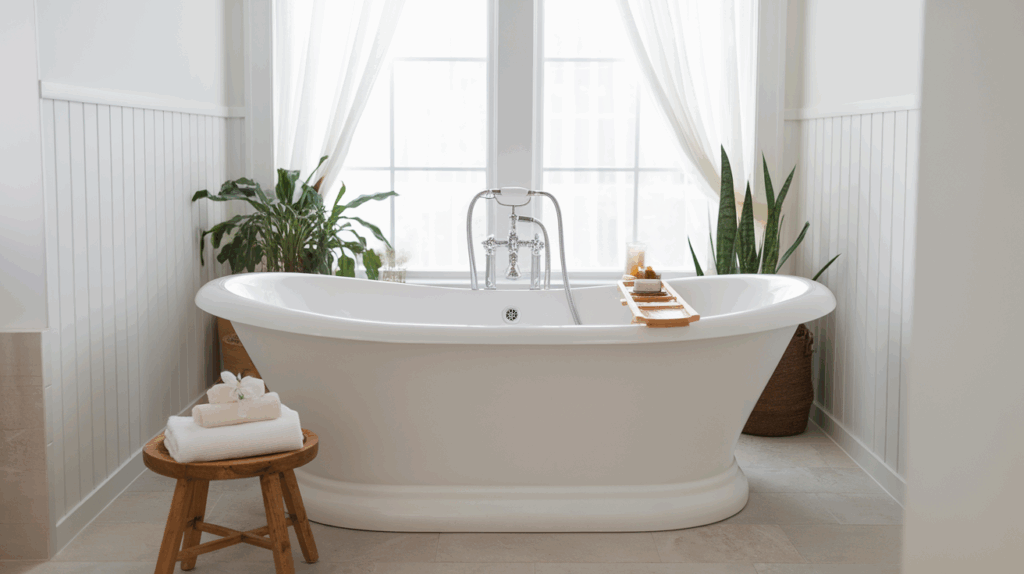I kept hearing people talk about garden tubs, and I had no idea what they meant. At first, I thought they were used outside or had plants around them.
However, I found that a garden tub is essentially a large, deep bathtub designed for soaking.
It’s often found in master bathrooms and provides more space than a standard tub. If you like taking long, relaxing baths, this type of tub might be perfect for you.
In this blog, I’ll explain what a garden tub is, how it looks, and why so many people like it. I’ll also discuss its pros and cons and compare it to other tubs.
You don’t need to be a designer or plumber to understand it. I’ll keep things simple and easy to follow, so you can decide if a garden tub is right for your home.
What Is a Garden Tub?
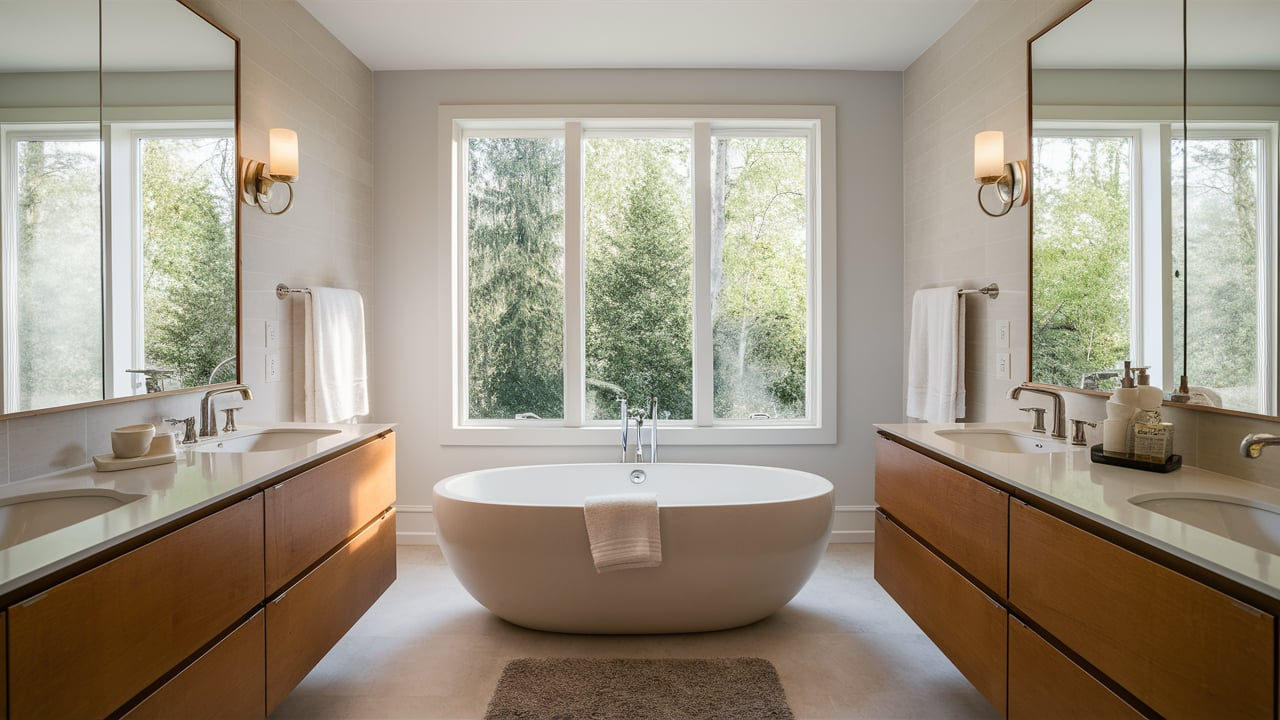
A garden tub is a large, deep bathtub made for soaking. It doesn’t have jets like a hot tub, but it provides ample space to relax.
Most garden tubs are oval-shaped and freestanding. They are often found in master bathrooms and add a touch of luxury. These tubs are made for comfort, not just quick washes.
Garden tubs derive their name from the days when they were often placed near garden windows. People could enjoy the view while soaking in the water.
Now, the term refers to a large, comfortable tub. Many people choose garden tubs because they give you space to stretch out and unwind.
What Does a Garden Tub Look Like?
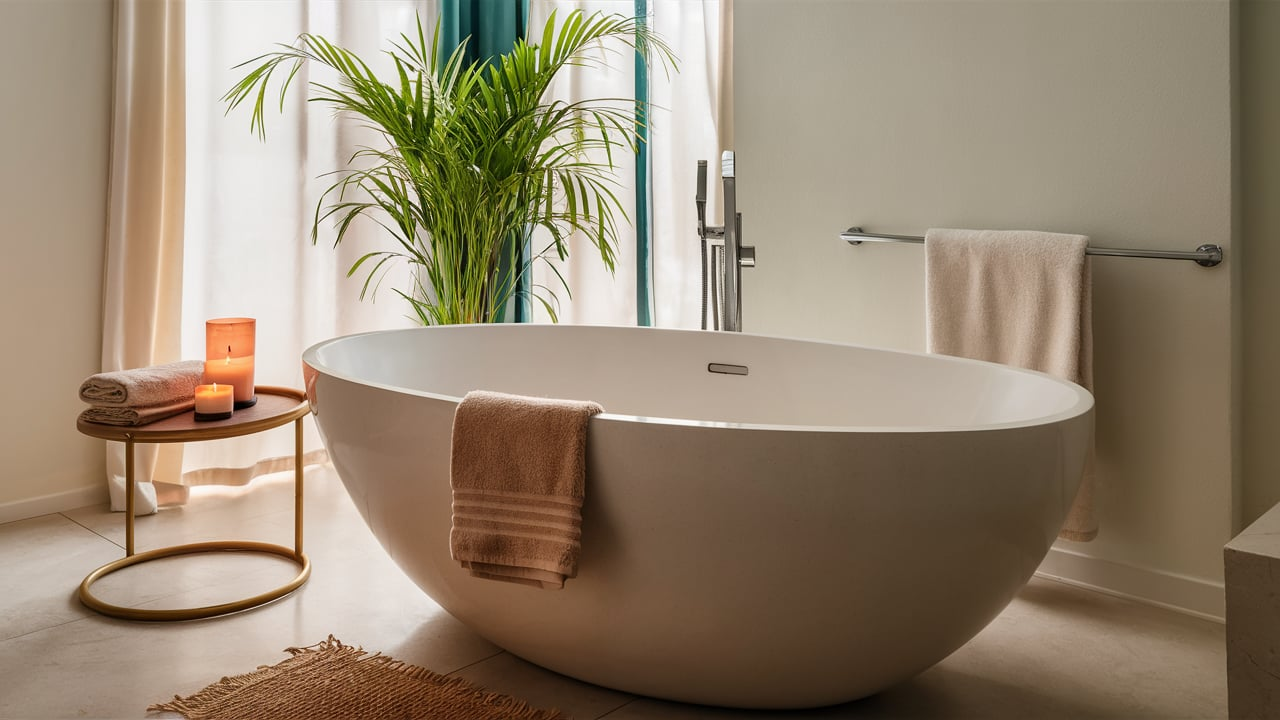
Garden tubs are larger and deeper than standard bathtubs. Some common features are:
- Oval or round shape
- Freestanding or drop-in style
- Extra depth for full-body soaking
- No shower head included
- No jets or bubbles (unlike a whirlpool tub)
The sides of a garden tub are usually high. This keeps the water warm for longer, allowing you to sit in deeper water for a more enjoyable experience.
Many tubs also feature a wide edge, allowing you to place candles, bath oils, or even a book.
How Big Is a Garden Tub?
Garden tubs are known for their generous size. They are much larger and deeper than standard bathtubs, which is why they’re so great for soaking.
While regular tubs are designed primarily for quick showers or baths, garden tubs are crafted for comfort and spaciousness.
What you can expect in terms of size:
- Length: Most garden tubs are between 60 to 72 inches long (5 to 6 feet). Some can be even longer for extra room.
- Width: They are typically 30 to 42 inches wide, providing you with more side-to-side space to stretch out.
- Depth: A key feature is the depth—garden tubs are often 18 to 24 inches deep, allowing the water to come up higher over your body.
Due to their size, garden tubs are ideally suited for larger bathrooms. You’ll also need to make sure your water heater can handle filling it with hot water.
Garden Tub vs. Regular Tub
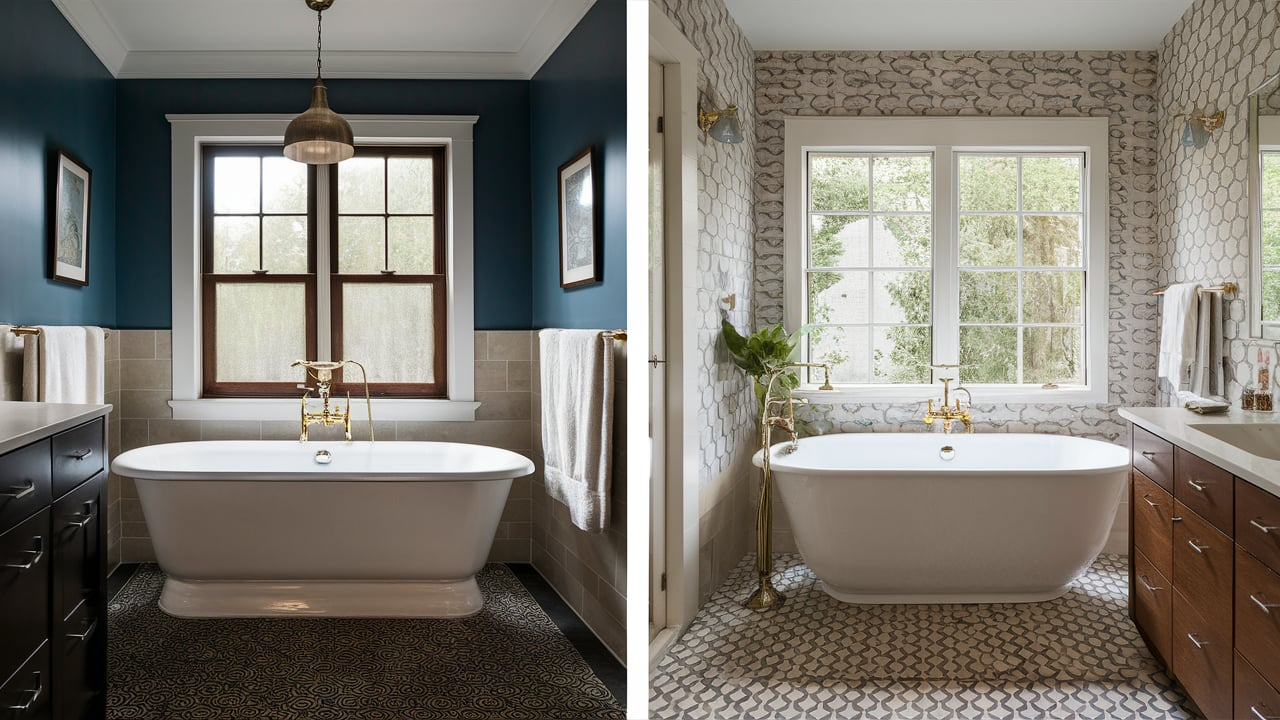
Garden tubs and regular tubs serve the same basic purpose; they both hold water for bathing.
However, they differ significantly in terms of appearance, texture, and functionality. If you’re trying to choose between the two, it’s helpful to understand what makes a garden tub special:
| Feature | Garden Tub | Regular Tub |
|---|---|---|
| Size | Larger | Smaller |
| Depth | Deeper | Shallower |
| Shape | Oval or round | Rectangle |
| Built-in Shower | No | Often included |
| Use | Soaking | Bathing/Showering |
| Comfort | High | Moderate |
Garden tubs are ideal for those who enjoy taking their time in the bath and want a truly spa-like experience. Regular tubs are better for daily use and small spaces.
Consider your routine and space before selecting the best one for your home.
Types of Garden Tubs
There are many types of garden tubs, each best suited for different spaces and home styles.
They all offer a deep soak, but their shape, setup, and design can change how they look and feel in your bathroom. Let’s take a closer look at the most common types:
1. Freestanding Garden Tub

A freestanding garden tub is not attached to any wall. It stands alone, often in the middle of the bathroom or by a big window.
These tubs are eye-catching and perfect if you want your tub to be a focal point in the room.
- Look and Feel: Freestanding tubs are available in various shapes, including round, oval, and even square designs. They add a modern or spa-like feel to the bathroom. You can walk all the way around the tub, making it easier to clean and decorate.
- Installation Requirements: You’ll need plumbing installed in the floor rather than in the wall. This might cost more, but it gives you more design options.
- Best for: Large master bathrooms, open layouts, and individuals seeking a luxurious feel.
- Bonus Tip: Place a small table or bath caddy nearby to hold soap, candles, or a book.
2. Drop-In Garden Tub

A drop-in tub is installed inside a raised platform or a custom-built frame.
The outer sides are concealed, and only the rim of the tub is visible. You can tile or decorate the deck area to match your bathroom.
- Look and Feel: Drop-in tubs give a clean, built-in look. The deck can be wide, providing space to sit, place towels, or store bath products.
- Installation Requirements: The frame or platform must be constructed before installing the tub. This provides design flexibility but also requires more time and effort.
- Best For: Homes with medium to large bathrooms that need a neat, tucked-in tub design.
- Bonus Tip: Add lights or plants around the deck to create a spa-like look.
3. Corner Garden Tub
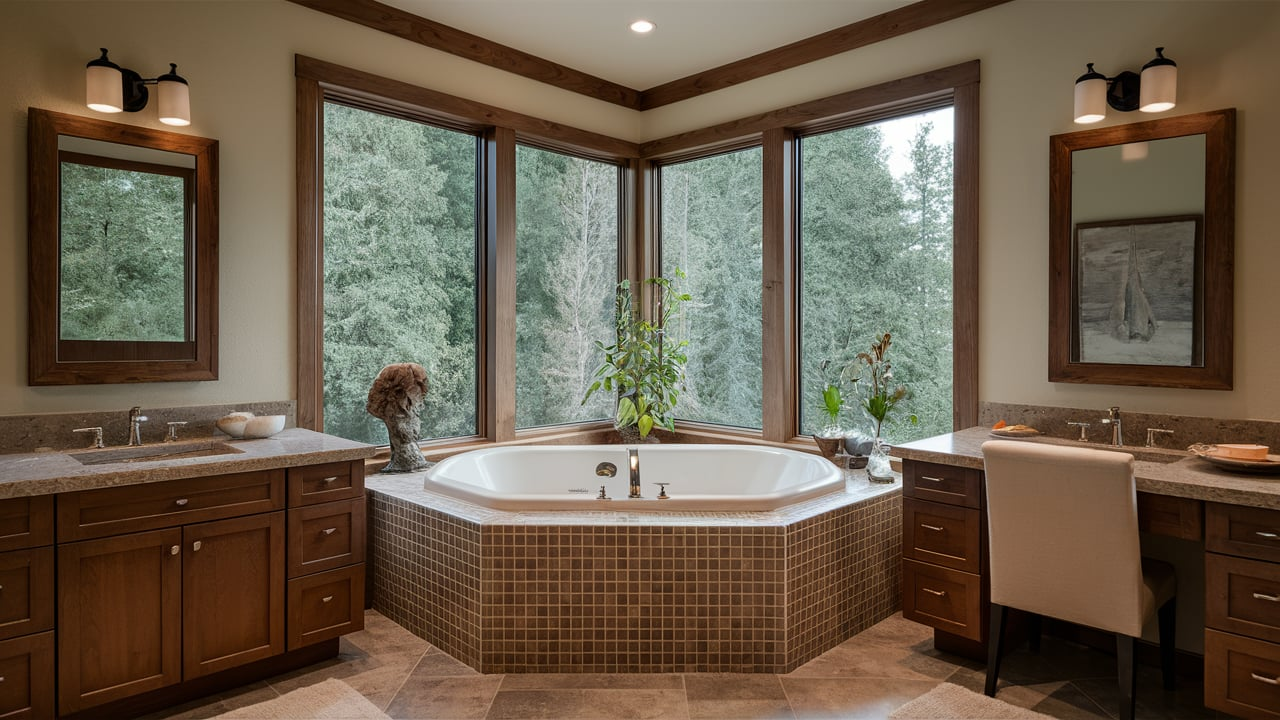
A corner tub is designed to fit snugly into a bathroom corner. It often has a triangle-like shape with rounded inner edges for soaking.
- Look and Feel: This tub makes smart use of space. Although it fits into a corner, it still feels spacious inside.
- Installation Requirements: It requires two walls for support and works well in oddly shaped rooms or bathrooms with available space in the corner.
- Best For: Mid-sized bathrooms where a freestanding tub won’t fit, but you still want something larger than a standard tub.
- Bonus Tip: Add a shelf or plant stand above the tub corner for a cozy touch.
4. Clawfoot Garden Tub
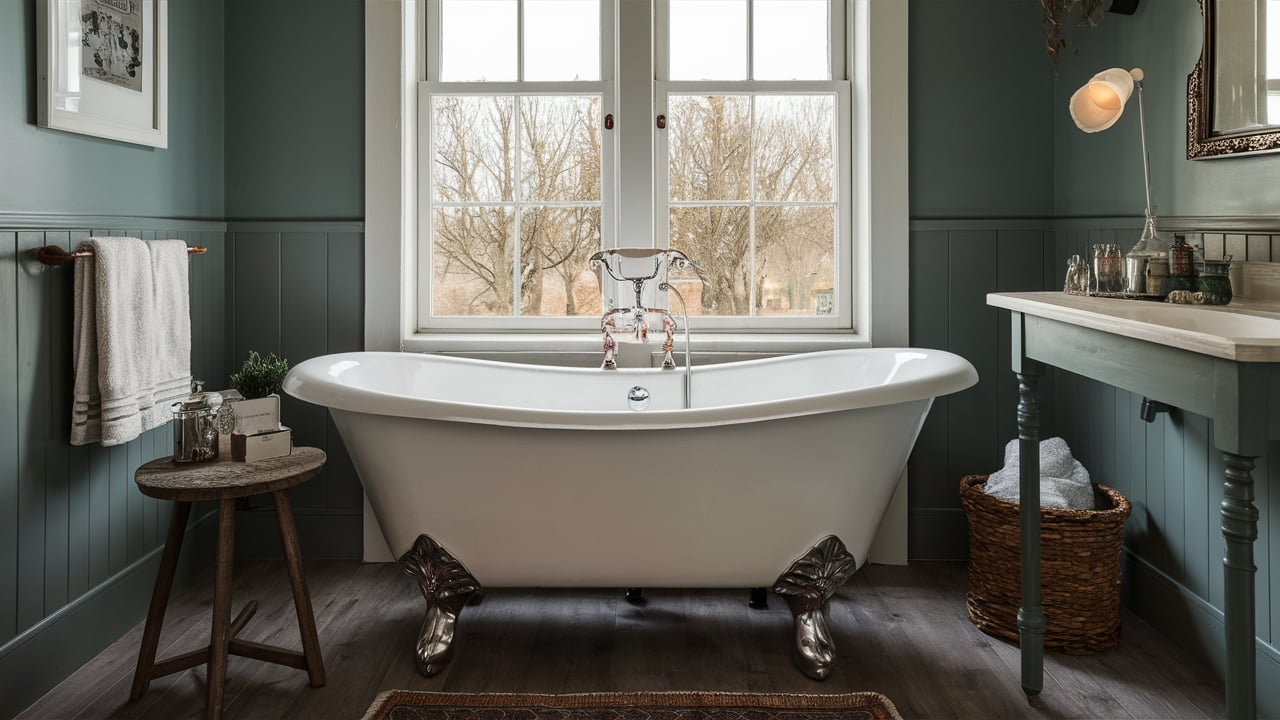
A clawfoot tub is a vintage-style freestanding tub that rests on four raised feet. These feet often feature designs that resemble claws, paws, or scrolls.
- Look and Feel: This tub brings a classic, old-fashioned beauty. It’s usually made of cast iron or heavy-duty acrylic. The inside is smooth and deep, perfect for soaking.
- Installation Needs: Like other freestanding tubs, it needs floor plumbing. Because it’s heavy, ensure your floor can support the weight, especially if the tub is made of cast iron.
- Best For: Farmhouse, vintage, or traditional-style homes, especially those with an old-world touch.
- Bonus Tip: Consider using a vintage-style faucet and hanging a curtain to add a touch of privacy or protect yourself from splashing.
5. Soaking Garden Tub with Deck Surround
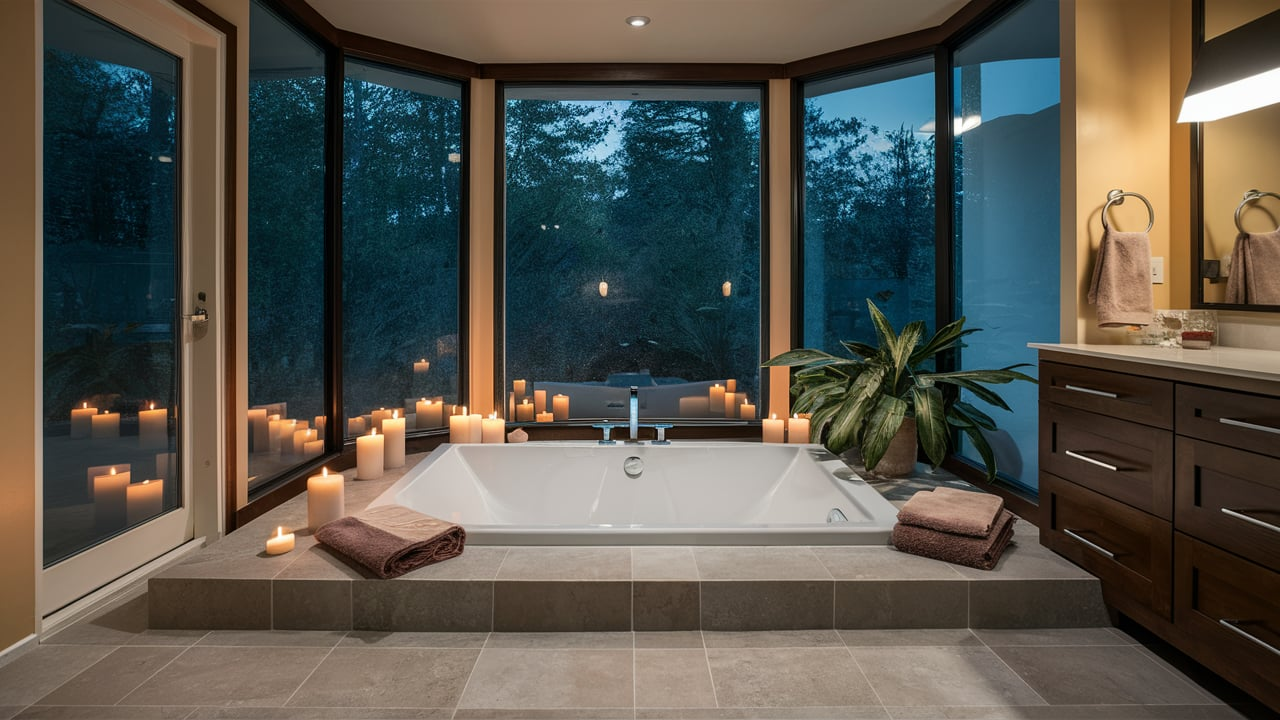
This type of garden tub is a drop-in tub that comes with a wide platform, or “deck,” around the top edge. The deck can be tiled or designed to match your vanity or floor.
- Look and Feel: This tub provides ample space to sit on the edge or decorate the surrounding area. It feels cozy and can be dressed up to look like a spa or retreat.
- Installation Requirements: Similar to a regular drop-in, it requires a custom-built frame. The deck needs to be measured carefully so it supports the tub and looks even.
- Best For: Homeowners who want function and style, plus extra space around the tub for sitting or storing items.
- Bonus Tip: Keep bath salts, oils, rolled towels, or candles on the deck to make bath time extra relaxing.
Every type of garden tub offers a special experience. Some take up more space, while others fit snugly into corners.
Some make a bold design statement, and others blend into the room. Consider your bathroom layout, budget, and preferred style of relaxation.
Materials Used for Garden Tubs
Choosing the right material for your garden tub can affect how well your plants grow, how long the tub lasts, and how it looks in your garden space.
Each material has its own benefits and limitations for container gardening. Garden tubs are made from a variety of materials:
1. Acrylic
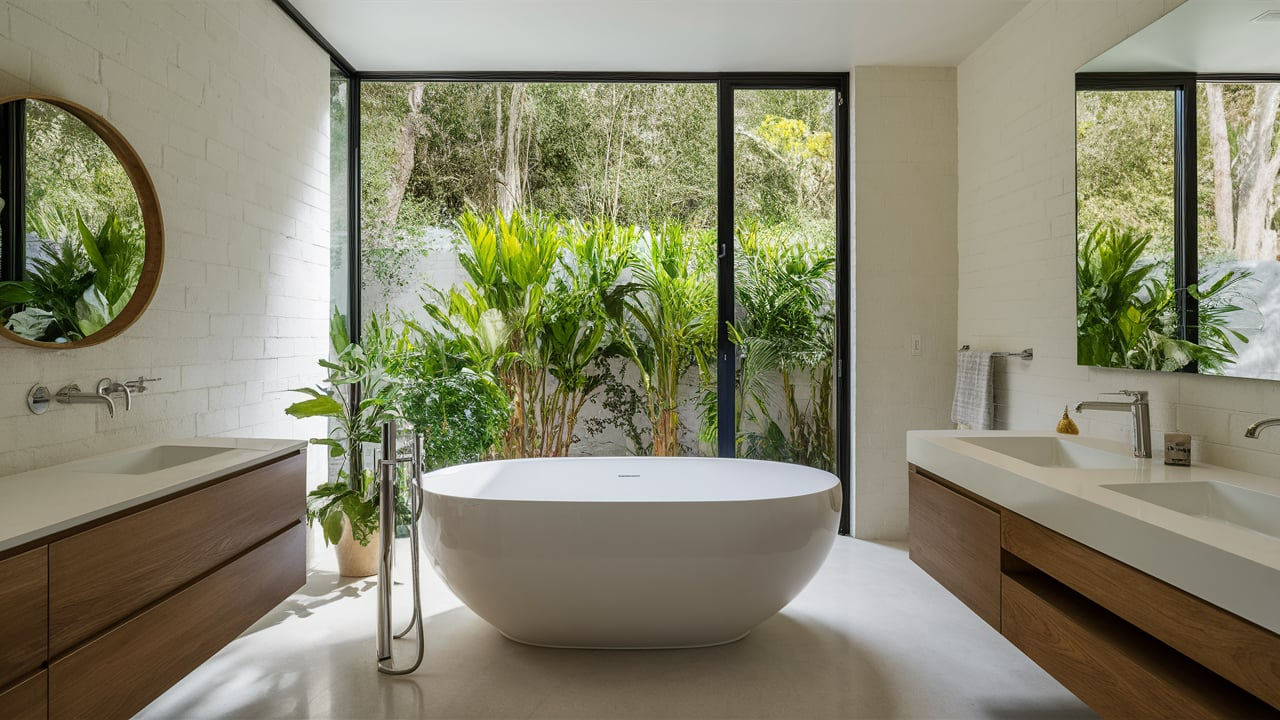
Acrylic is one of the most popular materials for garden tubs. It’s lightweight, easy to clean, and warms up quickly.
Acrylic tubs hold heat well, so your bath stays warm longer. They come in many shapes and colors and are more budget-friendly than heavier materials.
Just be careful, acrylic can scratch if you use rough sponges.
2. Fiberglass
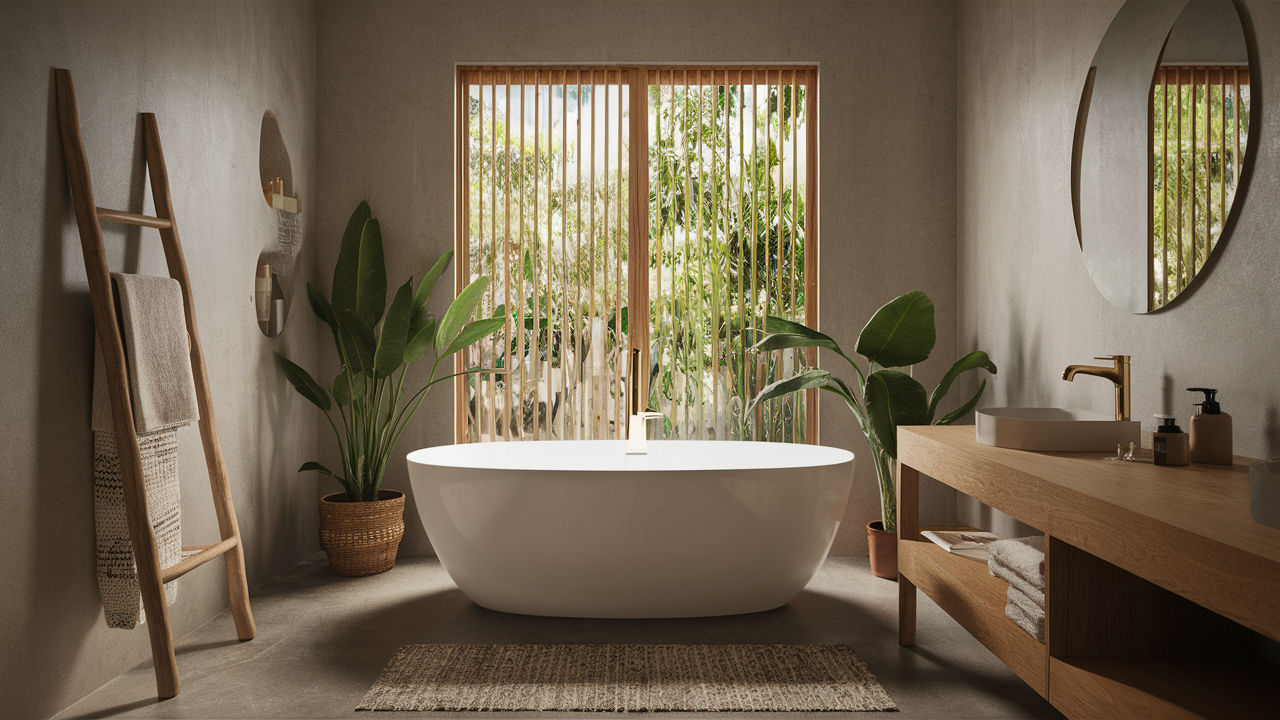
Fiberglass is a low-cost option that’s also light and easy to install. These tubs are great if you’re on a tight budget or want a quick update.
They are softer than acrylic and can stain or crack over time if not properly cared for. Still, they work well in guest baths or low-use bathrooms.
3. Cast Iron
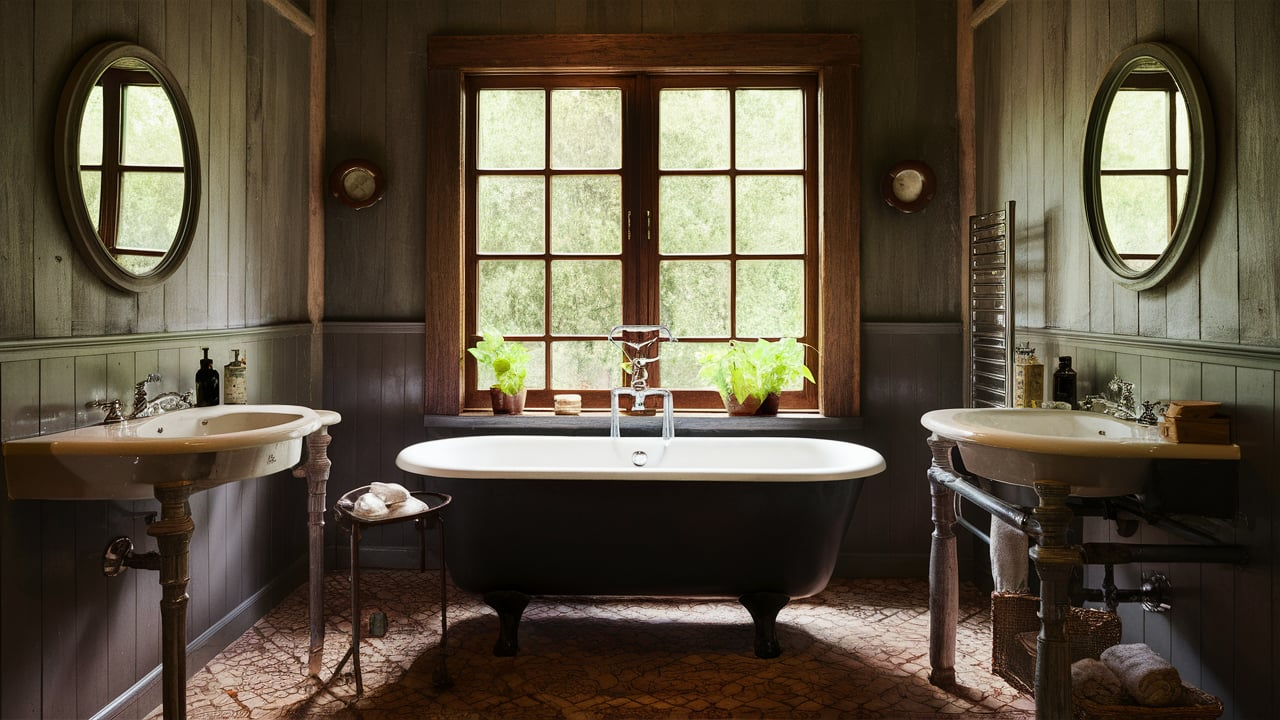
Cast iron tubs are very strong and last for many years. They are coated in smooth enamel, which is easy to clean and keeps a shiny look.
Cast iron holds heat very well, so it’s perfect for long soaks. But it’s very heavy; your floor must be strong enough to support it.
4. Stone or Resin
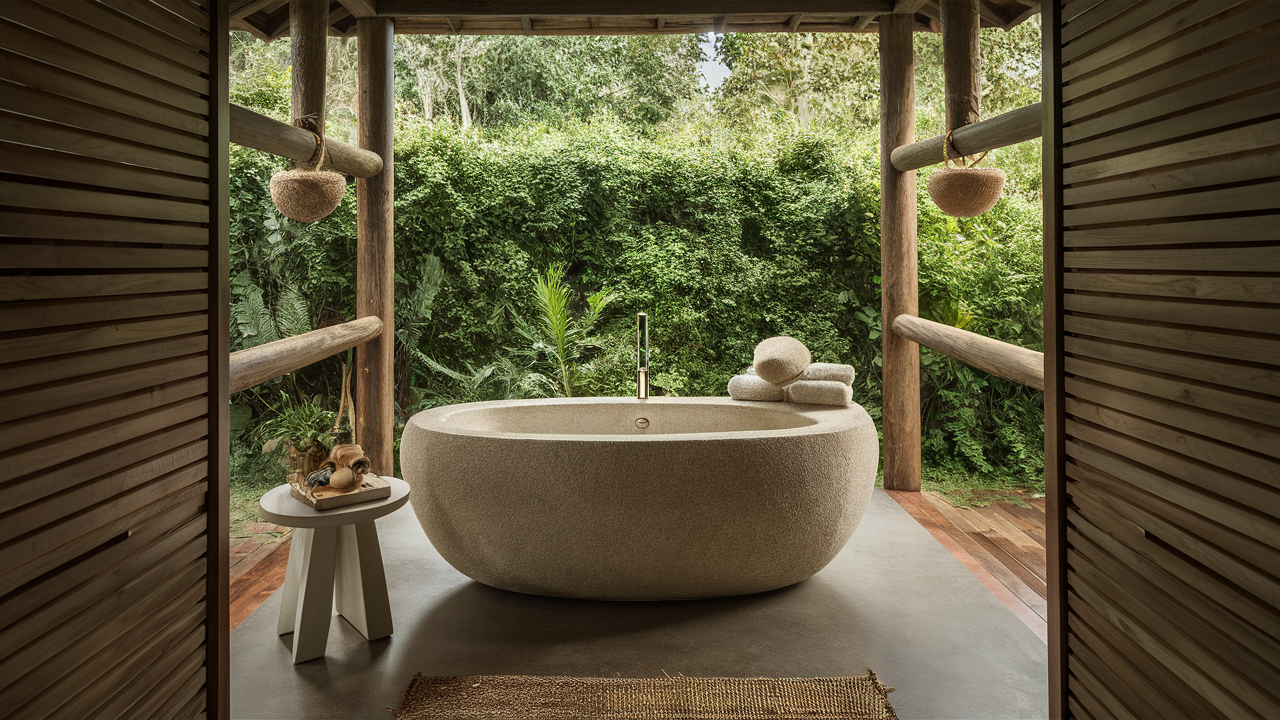
Stone and resin tubs look luxurious and feel smooth to the touch. They keep water warm for a long time, bringing a natural, spa-like look to the bathroom.
These tubs are heavier and more expensive, but they stand out in both style and strength. Resin is a lighter alternative to natural stone, yet it offers the same high-end feel.
Pros and Cons of Having a Garden Tub
Before adding a garden tub to your bathroom, it’s helpful to know both the benefits and drawbacks.
These tubs are great for relaxation, but they may not be the best fit for every space or lifestyle. Let’s take a look at the main pros and cons to help you decide if a garden tub is right for you.
| Pros | Cons |
|---|---|
| Deep and wide; great for soaking | Takes up a lot of space |
| Adds a spa-like feel to your bathroom | Uses more water than a regular tub |
| Stylish and eye-catching | May need a separate shower |
| Comfortable for long baths | It can be harder to clean due to its size |
| Available in many shapes and styles | Not ideal for small bathrooms |
| Can increase home comfort and value | Needs a strong water heater for hot water |
| Freestanding types allow a flexible layout | Some models are expensive to buy and install |
As you can see, garden tubs offer comfort and style, but they also need space and care. If you love long, peaceful baths and have room to spare, the benefits may be worth it.
Is a Garden Tub Right for You?
Before purchasing a garden tub, consider how you typically use your bathroom. Garden tubs are big, deep, and made for soaking.
They work best in homes where people enjoy long baths. If you like relaxing in the tub with quiet time or even a book, this might be a great fit.
However, you also need to consider space. These tubs need a larger bathroom, especially if you also want a separate shower.
You’ll also need a reliable water heater, as garden tubs use more hot water than standard ones.
Ask yourself:
- Do I take baths often?
- Do I have enough space for a large tub?
- Can my bathroom accommodate the size and plumbing requirements?
- Do I have a working shower elsewhere?
If you said yes to most of these, a garden tub could be a nice addition to your home.
How to Care for a Garden Tub?
Keeping a garden tub clean doesn’t have to be hard. With regular care, it can stay fresh and last for many years. Some simple steps to follow are:
- Rinse after each use: This keeps soap and oils from building up.
- Wipe it down weekly: Use a soft cloth or sponge with a mild soap or a mixture of vinegar and water.
- Avoid harsh cleaners: Refrain from using bleach or strong scrubbers, especially on acrylic or fiberglass tubs.
- Check the plumbing: Make sure there are no leaks under or around the tub.
- Clean the edges and corners: Dirt can build up where the tub meets the wall or floor.
If your tub has a deck, keep that area dry and clean too. Use bath mats and wipe up spills immediately. Good care keeps your tub looking nice and helps prevent mold or stains.
Conclusion
A garden tub is a great way to bring comfort and calm into your home. It’s large, deep, and made for long soaks.
If you enjoy taking baths and have the space, a garden tub can transform your bathroom into a serene retreat for relaxation.
These tubs come in various shapes, styles, and materials, making it easy to find one that suits your needs.
Before you choose, consider the space in your bathroom, how often you take baths, and the amount of water your tub will require.
It’s also beneficial to consider your budget and the cost of installing the tub. Taking care of a garden tub is simple if you keep up with cleaning and basic maintenance.
With the right setup, a garden tub can be more than just a tub; it can become your favorite spot to unwind and relax after a busy day.

